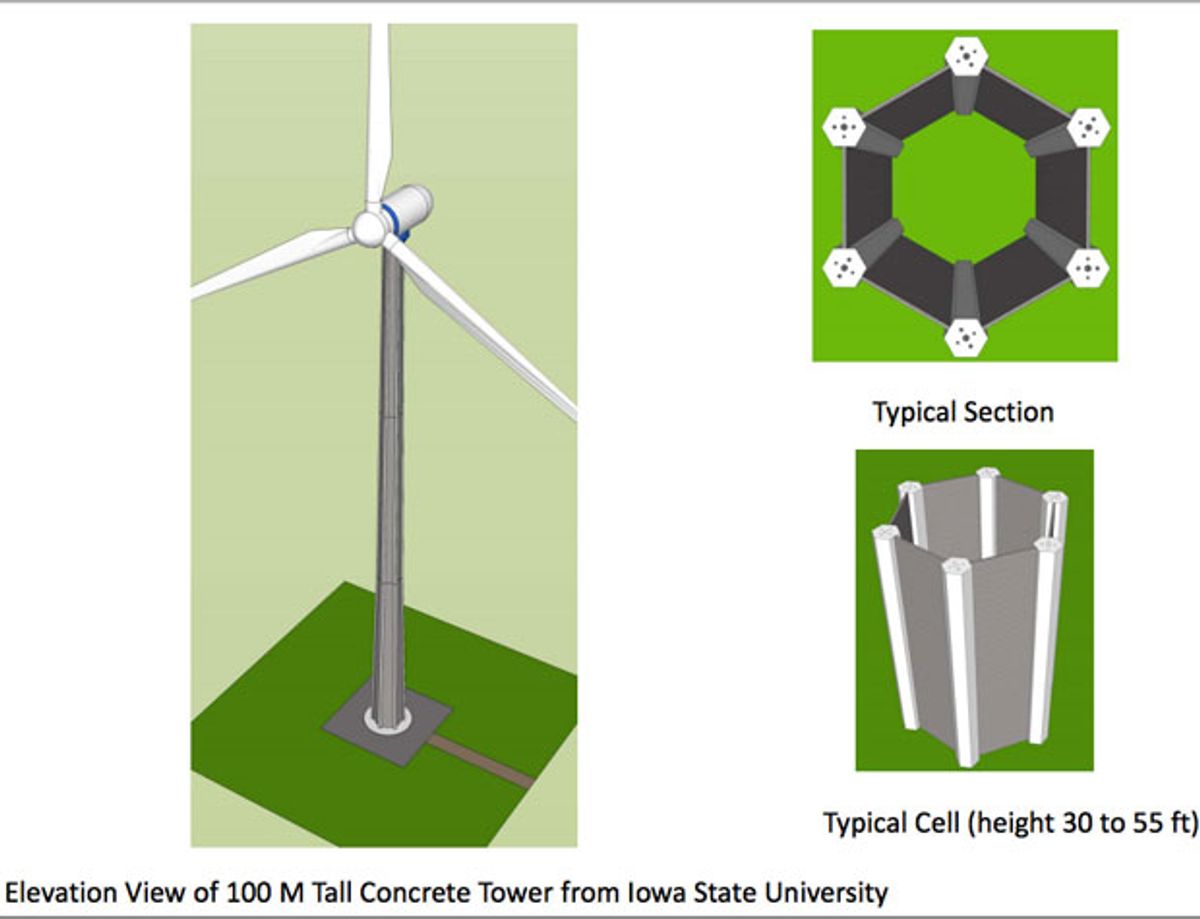Switching from steel to concrete somehow feels like a step backward, technologically speaking, but researchers at Iowa State University think doing so could aid in building ever-bigger wind turbine towers. Led by engineering professor Sri Sritharan, a group is using ultra-high performance concrete to build turbines that could soar past the 80 or so meters that steel has maxed out at.
Steel towers are the standard in the wind industry, but building 100-meter towers—needed to get better wind currents—becomes extremely expensive and logistically difficult. Sritharan's group is working on a couple of ideas using concrete that would allow a degree of modularity—instead of one big piece for the tower, panels attached to columns or pre-assembled "cells" could allow for towers of varying heights and would be easier to manage and transport.
So far, these designs have shown promise in load testing. Full-scale segments of the towers easily withstood the 100 000 pounds of operational load, and still performed well at much higher loads. Along with the modularity, concrete would increase the operational lifetime of a tower, from 20 years to as many as 40. And at even a mere 20 meters higher, turbines could take advantage of higher wind speeds.
To be clear, there are some concrete towers already out on the market. Acciona Windpower, for example, has a 3-megawatt turbine that can be installed using an 80-meter steel tower or a concrete version of varying heights. The concrete tower can get as high as 120 meters, and is also assembled in five or six sections. The vast majority of towers out there, though, are steel, and the Iowa State designs provide new methods of construction and assembly.
Of course, changing from steel to concrete carries some environmental questions: concrete contains cement, the production of which yields some serious carbon dioxide emissions. Like, five-percent-of-global-emissions serious. Steel production also emits CO2, though not on the same level; I asked Dr. Sritharan about this, and he said that he and a student have so far done only a limited analysis of the issue.
"The steel tower is likely to have less overall environmental impact if [a] duration of 20 years is used," he wrote in an e-mail. "However, the concrete tower can last longer as its design is not governed by fatigue." If the concrete tower lasts 40 years instead of 20, the overall environmental impact is likely smaller than that of the steel tower. "We definitely need to do more work in this area," he said.
The wind industry in general has long been interested in going both bigger and higher. Using concrete won't yield the 500-meter turbine, and it won't suddenly produce 10-megawatt behemoths, but it's a potentially useful step in those directions.
Photo: Iowa State University/Sri Sritharan
Dave Levitan is the science writer for FactCheck.org, where he investigates the false and misleading claims about science that U.S. politicians occasionally make.



